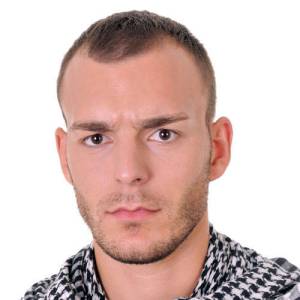In the fight to counteract the natural process of hair loss and maintain hair growth, it is wise to invest in one or more of the scientifically supported tools such as finasteride, minoxidil, and/or low-level laser therapy, rather than spending money on just any so-called “solution” promoted by infomercials, nutrition shops, or the Internet. The truth is, most shampoos, supplements, and devices claimed to help hair loss are not scientifically supported, and will probably be a waste of money. However, it turns out that there are two products which, although possibly not strong enough on their own to counter hair loss, actually produce a measurable effect on reducing hair loss.

Ketoconazole (2%) Shampoo
Probably the most important “small” but effective tool in this regard is a type of shampoo known as ketoconazole shampoo, an antifungal agent that is usually marketed for controlling dandruff. One of the most common brand names for this shampoo is Nizoral, which you can pick up from your local drugstore. The good news for those who experience hair loss is that this substance has been demonstrated to suppress the activity of androgens such as DHT, the hormone that causes hair loss. Several scientific papers have discussed this:
Reversal of androgenetic alopecia by topical ketoconazole: relevance of anti-androgenic activity, Journal of Dermatological Science.
A Prospective Randomized Trial Comparing Low Dose Flutamide, Finasteride, Ketoconazole, and Cyproterone Acetate-Estrogen Regimens in the Treatment of Hirsutism, Journal of Clinical Endocrinology & Metabolism.
Interestingly, while the second study has nothing to do with hair loss in men, it does show that ketoconazole hinders the effects of the hormone responsible for hair loss, DHT. Have studies been done specifically on the effectiveness of ketoconazole on stopping hair loss in men? Yes, and so far, the results are promising:
Ketocazole as an adjunct to finasteride in the treatment of androgenetic alopecia in men
Comparative efficacy of various treatment regimens for androgenetic alopecia in men
Ketoconazole shampoo: effect of long-term use in androgenic alopecia
In each trial, it was found that 2% ketoconazole shampoo effectively reduced the activity of DHT and had a positive effect on hair growth in men experiencing male pattern baldness. In the last study, ketoconazole alone produced the same effect on hair growth as 2% minoxidil. (However, note that the more commonly used concentration of minoxidil today is 5%, which is a stronger solution.) Interestingly enough, the “hair density” increased by a greater percentage in those who used ketoconazole compared to those who used 2% minoxidil. In the group of men using ketoconazole, the density started at 250 hairs/cm^2 and increased to 296 hairs/cm^2 at the end of the six-month trial, which is a (296 – 250)/250 = 0.184 = ~18% increase. In the group of men using 2% minoxidil, the density started at 276 hairs/cm^2 and increased to 306 hairs/cm^2 at the end of the trial, which is a (306 – 276)/276 = 0.0108 = ~11% increase. (You can read about the details in the full paper.)
In addition, unlike the 2% minoxidil, ketoconazole was found to decrease the activity and amount of DHT on the scalp. Of course, more studies need to be done to further confirm these results. There are important things to note about this tool, however:
- The researchers used a 2% concentration of ketoconazole in the experiment. Over-the-counter shampoos such as Nizoral often only hold a 1% concentration, which seems to effectively stop shedding and increase hair shaft diameter, but not increase hair density. Thus, the most effective tool would be a 2% ketoconazole shampoo rather than a 1% shampoo.
- In the experiments, the shampoo was applied 2 – 4 times each week.
- The shampoo was used for at least six months, and up to 21 months in one study.
It appears that 2% ketoconazole shampoo is an effective tool for combating the process of hair loss. In addition, it is relatively inexpensive, compared to the other treatments such as minoxidil, finasteride, and low level laser therapy. Furthermore, it only needs to be applied three or four times per week. Overall, it seems to be a good tool to include in the arsenal. However, as with all tools for fighting hair loss, it has to be used consistently and indefinitely, since the hair loss process is always “fighting” to weaken the hair follicles.
Caffeine Shampoo?
Another substance that does not have quite as much research supporting it, but seems to definitely have positive effects on hair growth, is caffeine, and specifically a caffeine-fortified thickening shampoo known as Alpecin, made from a formula developed by Dr. Kurt Wolff, a dermatologist from Germany.
One study was conducted and showed that caffeine delivered to the scalp has a positive effect on hair growth, and counters the negative effects of testosterone on hair:
Effect of caffeine and testosterone on the proliferation of human hair follicles in vitro, International Journal of Dermatology.

Another study specifically tested the caffeine-fortified Alpecin shampoo on those who experience male pattern baldness, and found a positive effect at the end of six months of consistent use:
Efficacy of a cosmetic caffeine shampoo in androgenetic alopecia management
While this study is interesting, it is important to note that the results were based on SELF-analysis of the participants. In other words, unlike the studies supporting ketoconazole, the results weren’t based on precise measurements by experimenters on hair density and other factors, but on the self-reports of those who used the shampoo. However, that doesn’t mean the results are useless; after all, if the person experiencing hair loss notices an improvement, that definitely counts for something. At the same time, it is hard to know how effective this treatment is overall on the process of hair loss, and whether or not it actually slows or stops hair loss long-term. In my personal experience, this shampoo produces immediate positive thickening effects, and seemed to even keep my hair thick over time. However, while using it, I still did notice my hair loss continue to progress.
Overall, both 2% ketaconazole shampoo and caffeine-fortified Alpecin shampoo seem to be effective, inexpensive tools for managing hair loss and even increasing hair growth. However, they need to be used properly and consistently. Are one or both of them sufficient on their own to stop hair loss? It is hard to say. However, at the very least, they do seem to help in a way that is measurable.


